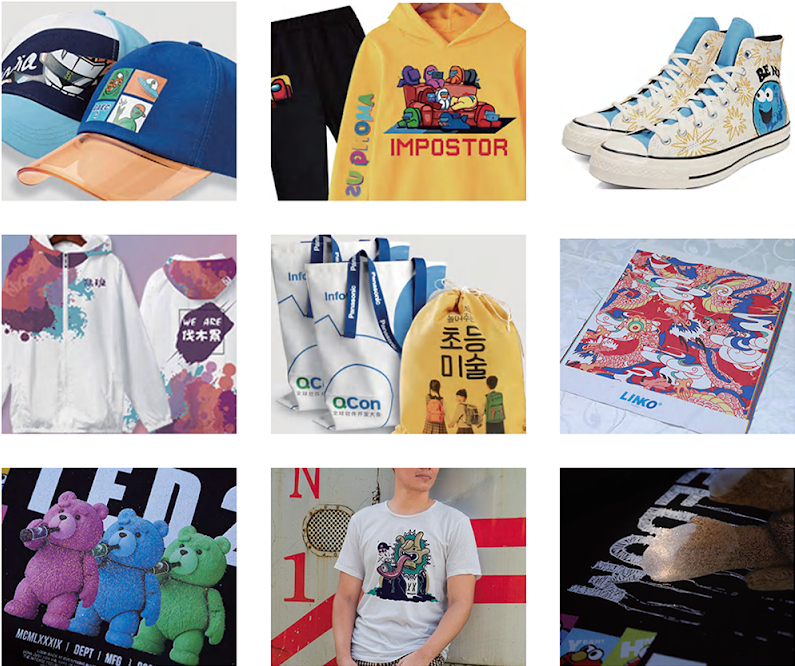Can I Print DTF on a Regular Printer?

Printing DTF on a regular printer requires a bit of work and investment. However, it can be a great option for those who want to expand their product offerings.
A standard printer can be converted into a DTF printer by using a conversion kit and special inks. This method offers several benefits over screen printing.
Cost-effectiveness
The initial investment for a DTF printer can be a hurdle for small businesses and startups, but the return on investment can be swift. This is because the DTF printing process offers a number of advantages that make it more cost-effective than other methods, such as HTV and vinyl. The DTF process also requires less maintenance and is more efficient than screen printing.
DTF printing is an innovative technology that allows printers to print designs on a variety of fabrics, including cotton, nylon, leather, and polyester/cotton blends. This makes it suitable for a wide range of products, from T-shirts and hoodies to hats and other apparel, as well as other substrates, such as signs and mugs. The process uses a digital printer to produce transfer films that can be heat pressed to the desired fabric.
To get started with DTF printing, you need a DTF printer and the right type of fabric. To get the best results, you should use a high-resolution image or vector file that is formatted correctly for your particular printer. You should also use a dye-based ink for best results.
Another benefit of DTF printing is that it does not require any special mesh screens. It is more versatile than screen printing because it can print a variety of colors and details, and it can be used on both light and dark fabrics. It is also ideal for smaller businesses and startups with limited resources.
A DTF printer is a great option for printing high-quality, durable, and vibrant designs on shirts, hoodies, and other apparel. Its low initial cost and fast turnaround times make it a valuable tool for any business looking to increase revenue and market share. In addition, DTF printing is easy to implement and can save your company a lot of money in the long run. Moreover, the technology is also highly scalable. By investing in a larger machine, you can increase your production capacity and expand your customer base. Moreover, you can also sell the DTF prints to customers, making this printing method even more cost-effective.
Ease of use
DTF printing is an easy way to create a design on fabric. It is an alternative to other decoration methods that require an expensive curing oven or heat press machine. Using DTF printers is more affordable and can produce high-resolution images with great accuracy. However, it is not the best method for long-term use, as the film may become smudged or fade after repeated washes.
A DTF printer is a special type of inkjet printer that can print directly onto a specific film for transfer to fabric. The DTF printer prints CMYK colors first and then white ink, creating a color layer that is then transferred to the fabric with a heat press. However, the printer must be used with the right software to achieve the best results. Using the wrong inks or incorrect settings can damage the printer and produce poor prints.
The DTF printer uses a special film that is coated with a special adhesive, which helps the design adhere to the fabric. This process is much simpler than the white toner printing technique. This saves time and money, as it does not require the tedious task of weeding the transfer. DTF transfers also last longer than other printing methods, as the colors don’t fade quickly.
Regular inkjet printers can be converted to DTF printers by adding a specialized ink system and updating the firmware. This process may void the warranty of the printer and requires technical expertise. Additionally, the specialized inks may clog the printer’s print head and cause a loss of print quality.
DTF prints can be used for a variety of different applications, including apparel, home goods, and even industrial fabrics. The DTF printer is an economical option for printing large quantities of fabric, as it can handle up to 400 garments per hour. This is a significant advantage over other printing methods, which are limited by the amount of fabric they can handle per batch.
The best way to get the most out of your DTF printer is to follow the manufacturer’s instructions for loading the media and ink. You should also take care to pre-treat your substrate and follow the recommended overprint practices to ensure excellent print quality. Lastly, it is important to test the printing process on a small sample to determine whether the quality of the print meets your needs.
Availability
If you are looking for a cost-effective solution to screen printing, DTF (direct-to-film) printers offer an attractive alternative. These printers are designed to print on transfer film for textile applications. They can produce high-resolution prints with vibrant colors and fine details. Unlike other printing methods, DTF requires no mesh screens and is suitable for many different fabrics. This allows you to scale your apparel catalog and make more products with high-resolution graphics.
While DTF printers are not as affordable as standard printers, they offer excellent print quality and high speed. In addition, they are easy to operate and can be used by virtually anyone with minimal training. The main drawback is the high cost of the printer and ink. It’s important to know how much you’ll spend on the equipment before making a purchase decision.
DTF printers can be purchased from specialty distributors or online. They use a special feed system that can handle thick media, such as film or transfer paper. They also have a unique ink system and printhead that provide superior printing quality. These features make them ideal for printing high-resolution images on Port Authority S608 and Bella Canvas 3001 shirts.
Most regular printers can be converted into DTF printers by changing the ink cartridge and replacing the printhead. The modified printers are usually CMYK-altered Epson models with six color ink tanks. These changes allow the CMYK inks to go into the standard CMYK tanks while the LC and LM tanks can be filled with White DTF inks. Additionally, the rollers used to slide the page are removed, which prevents the appearance of linings on the white layer printed on the DTF film.
In order to print high-quality DTF transfers, it’s important to follow the best practices. For example, it’s crucial to test the ink and transfer film to find the optimal ratio of ink to binder. Also, it’s important to follow the manufacturer’s instructions for mixing the ink and preparing the transfer film. If you don’t, you may experience problems with the adhesion of the ink to the transfer film and fabric.
Quality
DTF printing is an excellent choice for businesses that want to print colorful, high-quality prints on a variety of fabrics. This type of printing uses transfer powder and a special printer that can apply the powder to the fabric in a single step. This process is less expensive than screen printing, and it is also more versatile. It can be used on both white and dark garments, making it an ideal solution for a wide range of applications.
To get the best quality from DTF printing, make sure to use a high resolution and the correct type of ink. You can also use a film primer to help the film adhere better to the paper. You can purchase a DTF printer or buy an inkjet printer that has been converted to DTF using a DIY kit to save upfront costs.
A DTF printer is a good investment for any business that produces printed fabrics. This technology is highly reliable, and it offers unmatched quality and productivity. Its design is compact and easy to use, and it can print a large variety of designs on different sizes and colors of fabric. Additionally, it has a curing oven to melt the adhesive. This makes it a perfect choice for retail and industrial businesses.
The most important factor when selecting a DTF printer is its ability to produce high-quality prints. You should look for a printer with a high resolution and a high color gamut. This will ensure that your prints look sharp and professional. DTF printers are also capable of printing a high volume of designs in a short amount of time, which can improve productivity.
Another important consideration when choosing a DTF printer is its compatibility with your existing ink system. You should check for compatibility by referring to the software’s system requirements or contacting the developer. You will also need specialized RIP software, which you can obtain from a DTF supplier or developer. After installing the RIP software, you should calibrate the printer and transfer film to achieve optimal results. Finally, you should test the print quality on a sample fabric before you start producing actual products.



